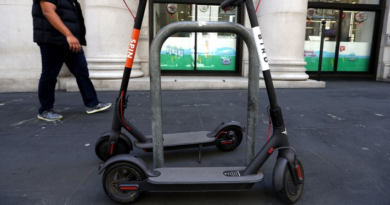Germany’s Instagrid, which uses software to supercharge portable batteries, raises $95M
Energy supply is one of the bigger issues impacting how technology will evolve over time — a challenge that might be feel closer to home when you consider the batteries of objects like mobile phones or electric vehicles but is definitely not constrained just to consumer tech. A startup called Instagrid is using software to scale that mountain when it comes to enterprise-grade portable chargers. It’s been getting a lot of attention, selling 30,000 units of its flagship “One” product to date and growing at 100% annually, and today it’s announcing a Series C of $95 million to power up its growth strategy. The funding is being made at a valuation of between $400 million and $500 million, post-money.
For the moment, lithium ion remains the main game in town when it comes to rechargeable batteries, and while materials are bound on change and improve, the lithium ion battery, even as it also improves, has some basic limitations. “In lithium ion over the last 10 years, the costs have decreased by 90% and energy density has increased by 300%, and power density has even increased by 400%. But power conversion has not kept up,” said Andreas Sedlmayr, the co-founder and co-CEO, in an interview. “So for us it was really looking into why is that broken and how can we fix that? In the end, what we did is we took a hardware problem and converted it into a software.”
The company, he said, has written “roughly 500,000 lines of software code” to improve getting energy out of its battery, which today weighs 20kg, is just 42x21x42cm in size, and can be fully recharged in a few hours plugged into a normal electrical socket.
The funding is being led by Teachers’ Venture Growth (TVG) — the later-stage investing arm of the Ontario Teachers’ Pension Plan. Morgan Stanley Investment Management’s (MSIM) 1GT climate private equity strategy, plus previous investors Energy Impact Partners, SET Ventures, blueworld.group, Hightech Gründerfonds, and Pierre-Pascal Urbon (who chairs Instagrid’s advisory board), also participated.
Instagrid, based out of Stuttgart in Germany’s industrial heartland, had only raised around $55 million previously since being founded in 2018.
Sedlmayr co-founded and co-leads the company with Sebastian Berning. Both have PhD’s in material science and were working on battery technoloogy at Bosch, seeing the challenges from the other end: the batteries that power different devices, used by people on the go, which need recharging regularly.
“But Sebastian and I are entrepreneurs at heart, so we decided that this is the time that we step out and build something from scratch to help with that,” he said.
Instagrid’s focus on enterprise scenarios — industrial customers, utility providers, medical and emergency services, and media companies are among its customers — grew directly out of that. Sidestepping direct competition with its former employer, among others, it’s not looking (currently) at how to manage batteries in devices, but at generators that are used to charge that electrical machinery when mains electricity is unavailable. Sedlmayr, in fact, talked to me for this story from Las Vegas, where he was attending a conference for the concrete industry: that’s a mark of the company’s target user, but also of the region where the company is now focusing its business development.
One of the problems that Instagrid is going out to fix is the environmental one: existing, legacy generators are first of all expensive, loud, and bad for the environment, and organizations are looking for alternatives to power their work.
There are likely many tens of thousands of them already in use in the world — Instagrid’s main investor here puts the figure of combustible engines in the world, a more general range of products, at 50 million — and these are in need of replacing.
Just one study, covering the humanitarian aid sector, found that there are likely 11,000 fuel-powered generators in use across different aid organizations.
“Our initial conservative estimates are that humanitarian agencies spend more than $100 million on fuel per year, emitting almost 200,000 tonnes of CO2,” the report notes. (It also happens to suggest a different alternative to what Instagrid has built: solarized systems, which represents another alternative that exists today and Instagrid could also potentially adopt.)
The other problem that Instagrid is looking to solve is controlability: as “dumb” machines that you simply fill up and run, these generators can be hard to manage and control. The software element of Instagrid’s system essentially allows an organization to manage its batteries like a remote fleet: you can understand where power needs to be used, and where it can be powered down, how much power is left, and more.
That is the key aspect of what attracted TVG, essentially a tech investor, to the company.
“We were drawn to Instagrid’s novel use of software to extract higher performance from battery cells and became particularly excited after discussing the company’s technology with other parts of OTPP’s portfolio,” European MD Avid Larizadeh-Duggan told TechCrunch. “Through our real estate and infrastructure investments we were able to appreciate that thousands of generators are being deployed in the field and that these come with major drawbacks in terms of cost, health and safety and work environment on top of the associated carbon emissions. But until now there hadn’t been a viable portable battery solution for professional use. Existing portable battery packs target consumer users and lack the peak power performance for professional application. Instagrid solves this through proprietary power electronics and software which extract unrivalled peak power and allow Instagrid products to power anything with a plug.”
The focus on software and cloud-based access feels in some regards like the future of how batteries will develop and improve. (Research at a university in the U.K. for example has found a way to help better understand the health of batteries in portable devices, another indirect way of improving their efficiency.)
That also potentially opens the door to malicious hacking, but Sedlmayr said that it focuses on robust security around its system and that to date there have been no attempts at breaches. That threat could increase with its growth, however.
Larizadeh-Duggan said that areas of opportunity for the company include more accessories to enhance monitoring in the cloud, including more emissions and energy usage tracking and analytics; improving the startup’s energy management algorithms, to focus on “three-phase power and uninterruptable power supply as required in specialist use cases”; and more hardware.
This is an area which today focuses around lithium ion, although Sedlmayr describes the company as “material agnostic” and willing to work with other kinds of battery designs over time as they emerge.




